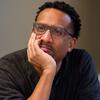Editor’s Note: Since this interview, the Trump Administration has cut several key programs supporting digital equity, such as big spending cuts to broadband infrastructure spending and terminating the Digital Equity Act. This will no doubt exacerbate all of the basic needs challenges we discuss in this interview.
Imagine being a student who relies on the Internet for coursework, but you can’t reliably access it.
What if you couldn’t log in to do your homework? What if your financial aid form timed out at the library? How about if you had a child at home that needed your care? What if “attending class” meant parking outside a McDonald's to borrow Wi-Fi?
For millions of college students across the country, reliable internet access is not a given—it’s a barrier.
At The Hope Center, we’ve long studied how food, housing, and transportation insecurity can force students to make impossible decisions, often deciding between eating or being able to pay tuition bills. But connectivity insecurity—the inability to access affordable, reliable internet—is another urgent basic need, especially in rural areas and for systemically marginalized students from low-income backgrounds. In fact, nearly an eighth of students in our national survey report reported that they were struggling to stay connected to online coursework due to unstable internet access. That's hundreds of thousands of admitted students who cannot complete their work because of things outside of their control.
While we continue to fight for state and federal policies that support students, we also know communities need solutions now. What happens when government support falls short—or disappears entirely?
To explore what’s possible, I spoke with Sean Gonsalves, Associate Director for Communications at the Institute for Local Self-Reliance’s (ILSR) Community Broadband Networks Initiative. ILSR works with communities across the country to build their own broadband networks and take ownership of the digital infrastructure students depend on. We talked about why broadband is a basic need, how communities are building their own systems, and where higher ed fits into this local movement for equity and access.
What drew you to ILSR?
I had already known Chris [Christopher Mitchell, Director of the Community Broadband Networks Initiative] through some mutual friends and had been informally involved in conversations around the internet and how it was changing. The pandemic was the moment people outside of the broadband world had the lightbulb go off. They realized that universal access to high-speed internet is in the same category as access to electricity and water to meaningfully participate in 21st century society. That access needs to be quality, it needs to be affordable, and it needs to be ubiquitous. With that realization, a lot of things began to happen. That realization led to generous donors and contributions that allowed this program to expand and created a position for more research and writing—that’s how I came to ILSR.
How do you talk to folks about access to the internet being a basic need when so many don’t treat it as such?
We see this as being a civil rights movement. The “digital divide” is a term that most people are familiar with. But it’s not as simple as “rural communities don’t have internet and cities do.” In fact, more people in urban areas do not have access to home internet than people who live in rural communities, but for different reasons.
In rural communities, it’s often that the physical wires and such are lacking. In urban and suburban communities, the issue is more around monopolization—which is a direct result of the fact that we have a broken broadband market in which we’ve allowed these big ISPs [internet service providers] to have regional monopolies.
Most people live in an area that’s Comcast or nothing, or AT&T or nothing, or Charter Communications or nothing. Maybe your other choice is a bad satellite connection or a DSL line—basically dial up. For tens of millions of people—whether this is a monopoly or a duopoly—this is an affordability question. There’s no incentive to invest in network upgrades, compete on price, or offer good customer service.
If you look at surveys of the most hated companies year after year, you’ll see the big ISPs near the top of those lists.
The reason why I say it’s a civil rights issue is because internet connectivity has become essential to participate in modern society—whether it’s related to job opportunities, remote learning, or anything else. But it’s more than that—telehealth is a field that I think folks haven’t really wrapped their minds around in terms of potential improvements to health outcomes. The folks who tend to be on the wrong side of the digital divide tend to be Black, Brown, and Indigenous communities. [Editor's note: Our 2023-2024 Student Basic Needs Survey Report shows this to be true for college students as well.]
If you can’t make a mental health appointment or check in with a parole officer at home because you don’t have internet, you might have to take an entire day off because it takes three hours and costs a lot of money to get to that building.
You know, I can imagine the ghost of Adam Smith, like, nodding in agreement. In The Wealth of Nations he makes the point that there are certain public goods that everyone needs access to—even in a free market. You can’t have people walking around barefoot, for example, shoes are a resource everyone should have access to. The market is broken to begin with, and we have reached the point where internet access has become so fundamental in our day-to-day and the economy. AI is only going to exacerbate the digital divide.
What does it mean to have communities make a choice to rely on themselves for things like broadband access rather than major corporations? Where do you start?
These big telecom companies have a market monopoly—but they do not have a monopoly on the technology. There are hundreds of communities across the US that have built their own local internet infrastructure—which is primarily what we advocate for, track, and analyze.
“Community broadband” is an umbrella term for publicly-owned, locally-controlled internet networks. That comes in different flavors, the main one being municipal broadband.
Municipal broadband is when a municipality builds a broadband network in the same way they build roads, schools, water systems, or sewers—which, by the way, are far more expensive and complicated than building a local internet network. When people hear, “It’s going to cost $100 million, $150 million to build out a fiber network that reaches every address in our town,” they respond “oh my goodness!”
But ask, then, how much does it cost that same city to build the sidewalks or the roads? It’s orders of magnitude more than that. Community broadband reminds people that cities and towns build capital intensive infrastructure projects all the time. The idea that it’s somehow too esoteric to build a telecommunication network in a city or town is wrong.
What we do is track communities who have done this successfully, and those who have not. Those are few and far between—but they exist. The golden child for this is Chattanooga, Tennessee. They got into broadband because they were building fiber networks to better monitor their electric systems, which meant they could reduce outages because they could identify them before they happen. They realized they could extend the fiber network to build a home internet network, and that’s how you got EPB fiber.
In Chattanooga, speaking of students, they were able to work with the state, the city, and some philanthropists to set up a program called HCS Ed Connect, which offers every low-income household in Chattanooga and in the surrounding towns free fiber service for a decade. That’s not relying on the Affordable Connectivity Program—which has been allowed to die by Congress. We’re talking thousands of students, thousands of households. [Editor's Note: The Hope Center also advocates for the restoration of the Affordable Connectivity program which provided 23 million low-income people—including over one million students who receive Pell Grants—with substantial discounts on their monthly internet bill. You can read our 2025 Policy Priorities here.]
In addition to affordability, they set aside a portion of their revenue for digital equity programs like digital literacy training. When your community owns and operates the network, you get to have a say in the structures and services.
Gigantic, private ISPs might go into that community—but they cherry pick. They go into the most affluent neighborhoods where they don’t have to worry about people falling behind on their bills. They might put substandard service in the other neighborhoods.
Digital Equity Los Angeles, an ally of ours, did a study a few years ago and found that Charter, the monopoly provider, was charging more for slower, crappier service in poor Black and Brown neighborhoods than they were in affluent neighborhoods for better service. That’s what folks call digital redlining, or what the FCC calls digital discrimination. Associated Press did a similar study nationwide and found the same thing.
How can colleges with high commuter populations like community colleges get creative around community broadband?
The E-Rate program has historically been a program that has money for colleges to build networks and bring connectivity to students.
I think data is the most important thing that folks can do initially. I think Oakland can be instructive insofar as it brought together a number of community organizations working with the schools and they were able to document on a very granular level where internet connectivity did or didn’t exist within the community. They also did things like speed test data collection so that they could demonstrate to state officials that even though the FCC map says that this particular community is served, they aren’t, or they’re dramatically underserved.
The FCC maps are notorious for overstating the availability, quality, and affordability of service. In a college setting, that feels like a project to me that initiates people into getting a closer understanding of what the digital landscape looks like.
Communities have the power and the means to solve some of these connectivity challenges. It’s really a question of political will.



